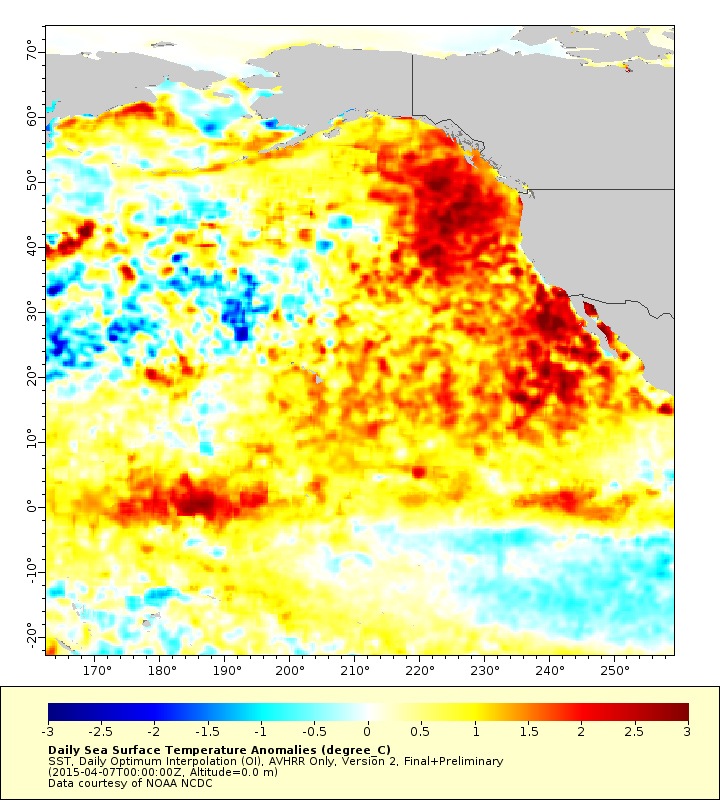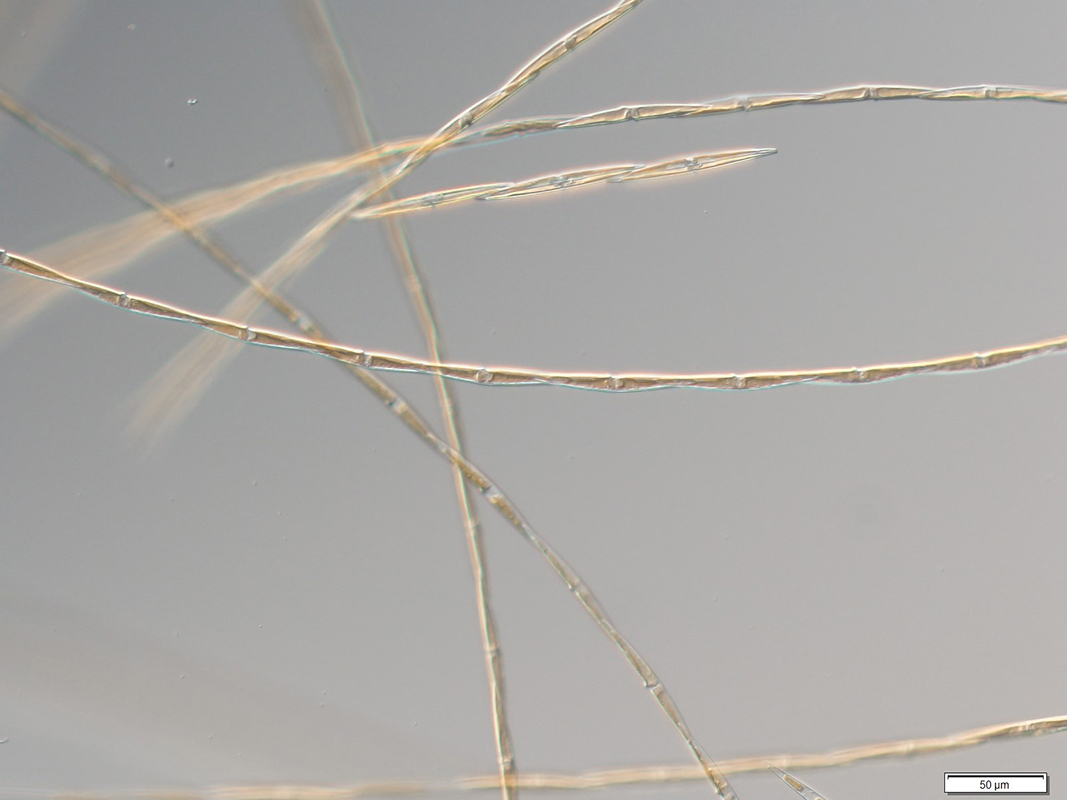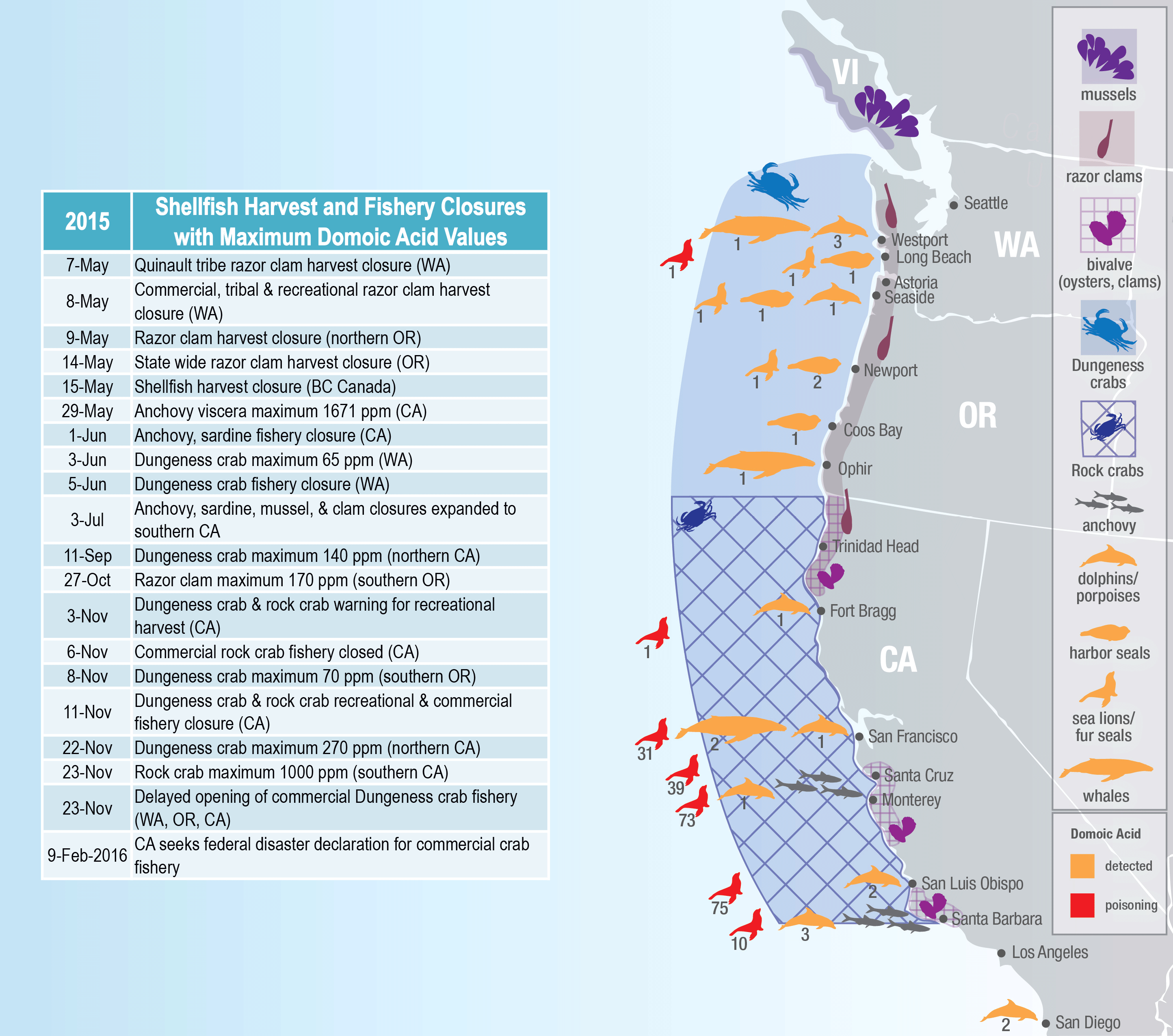Warm Ocean 'Blob' Triggered Worst-Ever Toxic Algae Blooms

Blooms of algae along the West Coast of the U.S. in 2015 were bigger and more toxic than ever before, contaminating food webs and closing fisheries from southern California to as far north as British Columbia, in Canada. Now, a new study links them to elevated ocean temperatures, with algae growth spurred by a mysterious patch of warmer-than-average ocean that scientists first noted years earlier and had dubbed "the warm blob."
The warm blob, which first appeared in 2013 and hung around into 2014, helped one species of toxic algae — Pseudo-nitzschia australis — increase in unprecedented numbers and expand farther north than was previously possible, with devastating effects on a wide range of marine life. [Yuck! Photos of 'Rock Snot' Algae Infestations]
Toxic algae events that are serious enough to merit fishery closures occur off the coasts of Washington and Oregon every three to five years, but the 2015 bloom was the largest by far, according to Ryan McCabe, the study's lead author and a researcher at the University of Washington's Joint Institute for the Study of the Atmosphere and Ocean in Seattle.

"And our results show that it was connected to the unusual ocean conditions,” McCabe said in a statement.
The warm blob began as a large, circular zone in the Pacific Ocean, about 1,000 miles (1,600 kilometers) long; 1,000 miles wide and more than 300 feet (90 meters) deep, spreading out along the coast and moving closer to shore in 2015. This infusion of warm water accompanied currents carrying nutrients from the deep sea, enabling P. australis to reproduce faster, the researchers discovered.

P. australis produces a neurotoxin called domoic acid, which can cause seizures and gastrointestinal distress, and is sometimes lethal. When shellfish and small fish like anchovies eat the algae, they can transmit the toxin to animals that feed on them — including people.
And because P. australis blooms were more widespread in 2015, more marine mammals were vulnerable to the impacts of the toxic algae, the researchers said.
Sign up for the Live Science daily newsletter now
Get the world’s most fascinating discoveries delivered straight to your inbox.
Scientists have long studied the cyclical growth of algae populations in coastal waters, building a 25-year record that tracks the ebb and flow of the algae and the toxins they impart to local marine wildlife. By establishing a link between warmer oceans and increased toxic algal growth, the new study hints that rising global temperatures could make deadly blooms a more common occurrence.
"Species like Pseudo-nitzschia are extremely well poised to take advantage of background warming," McCabe said. "Pseudo-nitzschia are always out there along our coast. The fact that they are almost engineered to take advantage of situations like this — warm temperatures and low nutrients — that is concerning."
The study was published online Sept. 20 in the journal Geophysical Research Letters.
Original article on Live Science.

Mindy Weisberger is an editor at Scholastic and a former Live Science channel editor and senior writer. She has reported on general science, covering climate change, paleontology, biology and space. Mindy studied film at Columbia University; prior to Live Science she produced, wrote and directed media for the American Museum of Natural History in New York City. Her videos about dinosaurs, astrophysics, biodiversity and evolution appear in museums and science centers worldwide, earning awards such as the CINE Golden Eagle and the Communicator Award of Excellence. Her writing has also appeared in Scientific American, The Washington Post and How It Works Magazine. Her book "Rise of the Zombie Bugs: The Surprising Science of Parasitic Mind Control" will be published in spring 2025 by Johns Hopkins University Press.










